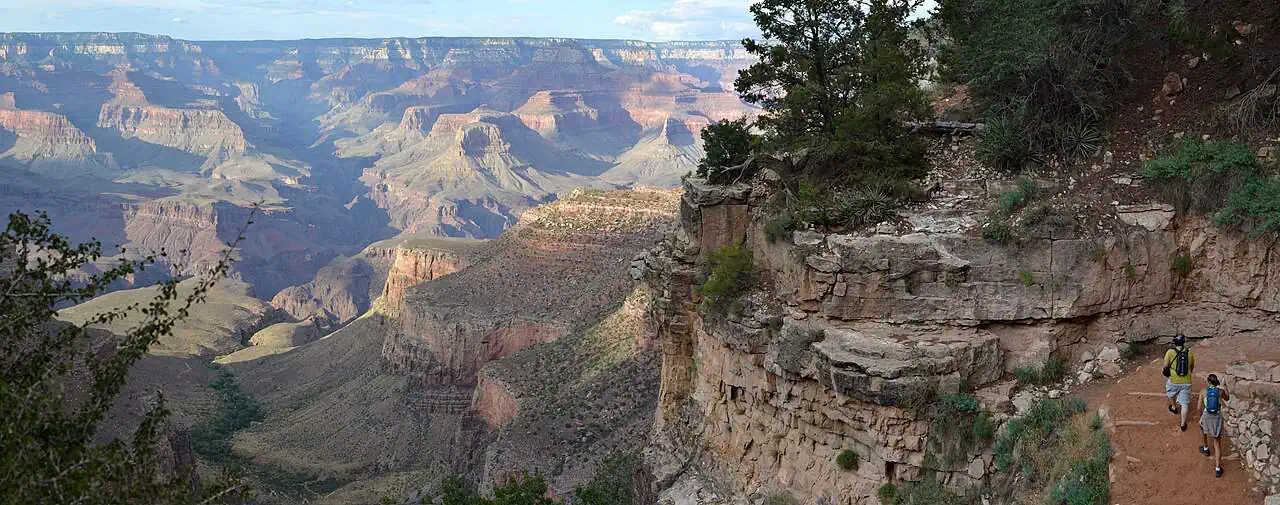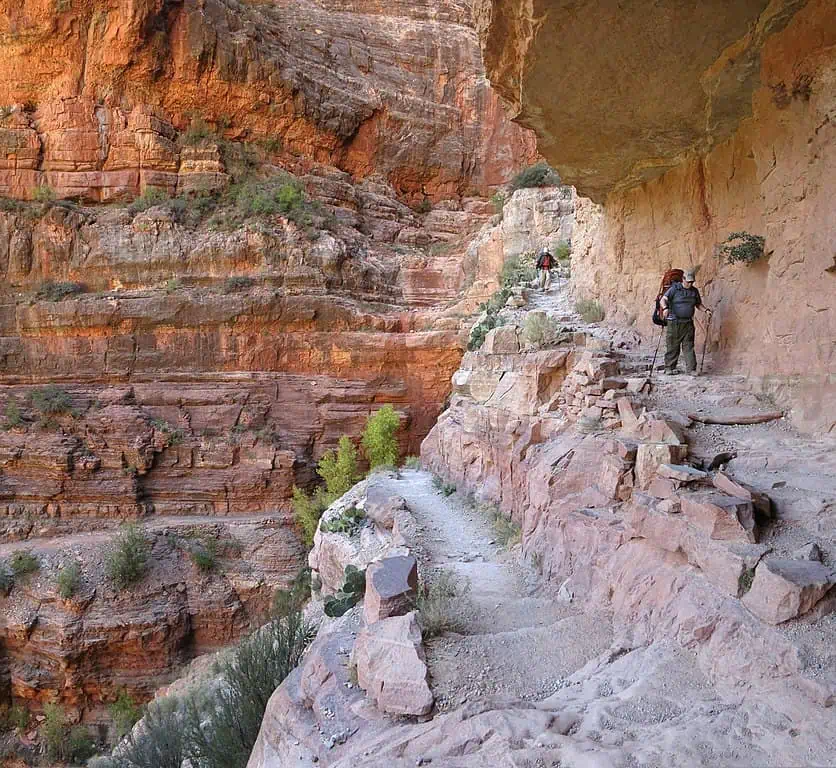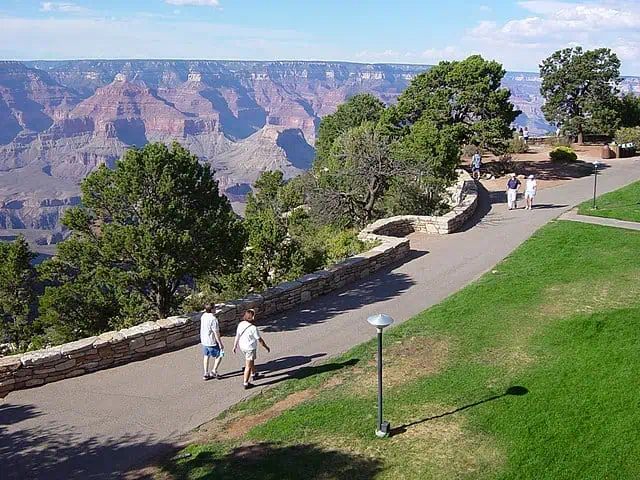Breathtaking views and an unforgettable experience, perfect for both seasoned adventurers and those seeking memorable day hikes. Here are the five best hikes in the Grand Canyon, from challenging descents to scenic rim trails.
1. Bright Angel Trail
Bright Angel Trail is one of the most iconic and accessible trails in the park, beginning at the South Rim and descending into the canyon. The trail’s switchbacks and steep inclines demand strong legs and stamina, especially on the return. Hikers are rewarded with incredible views, wildlife sightings, and geological formations that make it worth the effort. Note: there will be mules on this trail.
Distance: 9.5 miles one-way (full hike to the Colorado River)
Difficulty: Difficult
Tips: This well-maintained trail offers several turnaround points, which make it easier to customize based on your fitness level. Start early to avoid the midday heat, as there is limited shade.
Watch tips on how to stay safe while hiking in the Grand Canyon

2. South Kaibab Trail
The South Kaibab Trail offers some of the most dramatic vistas in the park. Unlike the Bright Angel Trail, this trail has very little shade and has no water along the trail, making it more demanding but incredibly rewarding. Hikers are treated to stunning panoramic views throughout, with popular stopping points like Ooh Aah Point and Skeleton Point that offer postcard-perfect views.
Distance: 6 miles round-trip to Skeleton Point
Difficulty: Strenuous
Tips: Due to the trail’s exposure to the sun, pack extra water and sun protection. The views are well worth the effort, so don’t forget your camera!
3. North Kaibab Trail
For those venturing to the North Rim, the North Kaibab Trail is the park’s only maintained trail that descends into the canyon from this side. Known for its solitude and lush surroundings, this trail takes hikers past waterfalls and the stunning rock layers of the Redwall section to Roaring Springs.
Distance: 9.4 miles round-trip to Roaring Springs
Difficulty: Extremely strenuous
Tips: This trail is quieter than those on the South Rim, making it ideal for those seeking a more secluded experience. Begin before 7 a.m. and be prepared for a long, challenging hike.

For a more leisurely experience, the Rim Trail follows the South Rim for about 13 miles, from the South Kaibab Trailhead to Hermits Rest. This mostly paved trail provides incredible views without the intense elevation changes of other canyon trails. Perfect for families or those looking for accessible viewpoints, the Rim Trail offers multiple overlooks, benches, and shuttle stops along the way.
Distance: Up to 13 miles one-way
Difficulty: Easy to moderate
Tips: You can hike as much or as little of the trail as you like, and since much of it is paved, this trail is also wheelchair accessible in certain sections.

For the billy goats out there, the Grandview Trail is a challenging, steep trail that descends about 3 miles (4.8 km) to Horseshoe Mesa, with options to continue further. Originally constructed in 1893 as a mining route, the trail is rocky, exposed, and demands caution. Featuring large steps, rugged terrain, and extreme dropoffs, the trail has an elevation change of around 2,600 feet (792 meters) in those three miles, making it best suited for experienced hikers. NPS recommends hikers not use this trail to access the Colorado River and consider walking the Bright Angel Trail for an easier hike.
Distance: 3 miles one way to Horseshoe Mesa
Difficulty: Extremely difficult, recommended for experienced desert hikers
Tips: Trail conditions can be rough, and it’s less maintained than popular routes like Bright Angel, so sturdy boots are essential. Start early to avoid heat, especially in summer, and carry plenty of water, as there’s little shade and no water along the trail.
Before you set out, always check the NPS website for the latest information and always HIKE SMART. Carry plenty of water and snacks, and although there are some places where pre-treated drinking water is available, make sure you have a method to treat water. And remember to bring The Ten Essentials, a list compiled by Sarah Shier, a Preventative Search and Rescue (PSAR) Ranger at Grand Canyon National Park. Her role is centered on educating hikers about the potential dangers of the trails and helping them plan to avoid incidents that could lead to rescues.
Top photo by EyeEm/Freepik

